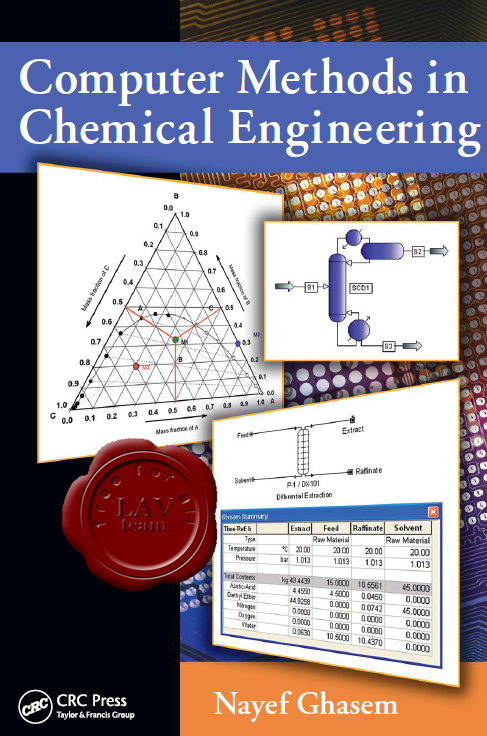Computer Methods in Chemical Engineering
In industry, complicated problems are often not solved by hand for two reasons: human error and time constraints. There are many different simulation programs used in industry, depending on field, application, and desired simulation products. When software is used to its full capabilities, it is a very powerful tool for a chemical engineer in a variety of fields, including oil and gas production, refining, chemical and petrochemical processes, environmental studies, and power generation. Although most of the software packages are user friendly, considerable effort must be expended to master these softwares.

Nayef Ghasem - Computer Methods in Chemical Engineering
CRC, 2011
pdf, 513 pages, english
ISBN 9781439849996
Computer Methods in Chemical Engineering
Software packages, such as PRO/II, Hysys/Unisim, Aspen Plus, and Design Pro, have been developed to perform rigorous solutions of most unit operations in chemical engineering. However, as a design engineer, one always needs to know the fundamental theory and methods of calculation to enable one to make decisions about the validity of these black box packages to verify the results. Most software packages are interactive process simulation programs. They are user-friendly and powerful programs that can be used to solve various kinds of chemical engineering processes. However, various conditions and choices have to be provided in order to solve a problem; good knowledge about the process is needed to be used effectively. The objective of this book is to introduce chemical engineering students to the most commonly used simulation softwares and the theory in order to cover core chemical engineering courses. The book is very useful in covering the application parts in various core chemical engineering courses such as chemical engineering thermodynamics, fluid mechanics, material and energy balances, mass transfer operations, reactor design, computer applications in chemical engineering, and also in graduation projects and in industrial applications.
Each chapter in Computer Methods in Chemical Engineering contains a theoretical description of process units followed by numerous examples solved by hand calculations and simulation with the four software packages, Hysys/Unisim, PRO/II, Aspen Plus, and SuperPro Designer, through step-by-step instructions. The book is perfect for students and professionals and gives them the tools to solve real problems involving mainly thermodynamics and fluid phase equilibria, fluid flow, material and energy balances, heat exchangers, reactor design, distillation, absorption, and liquid–liquid extraction.
14.6MB
Download
*